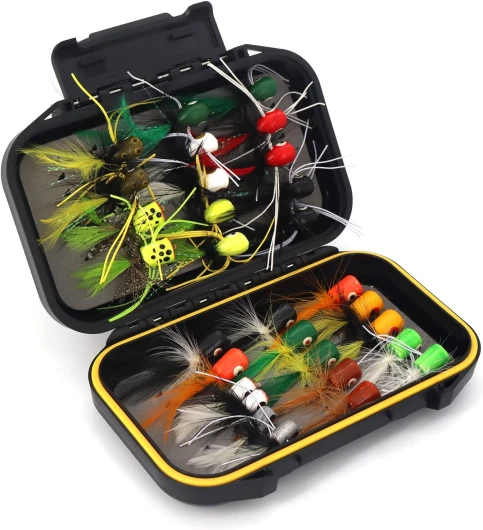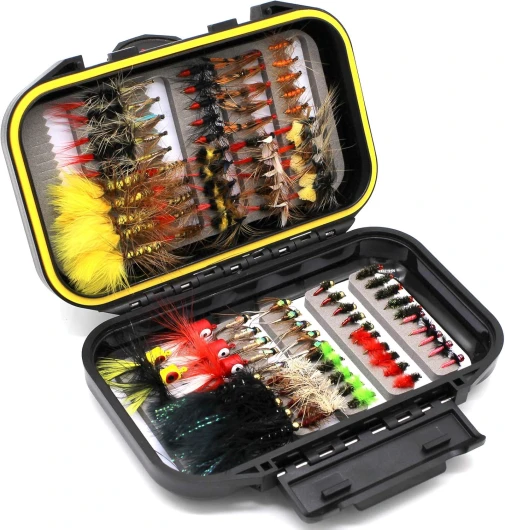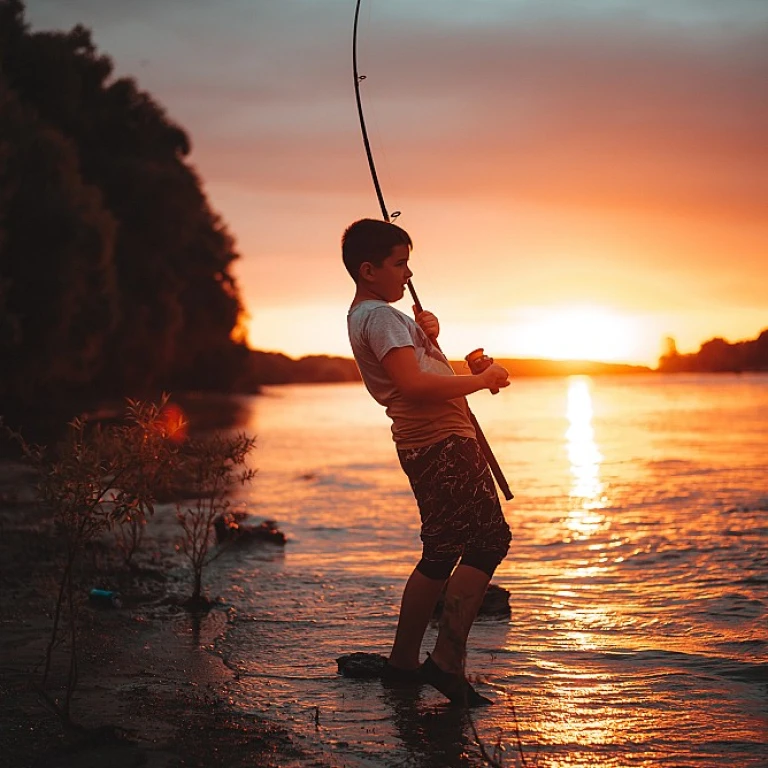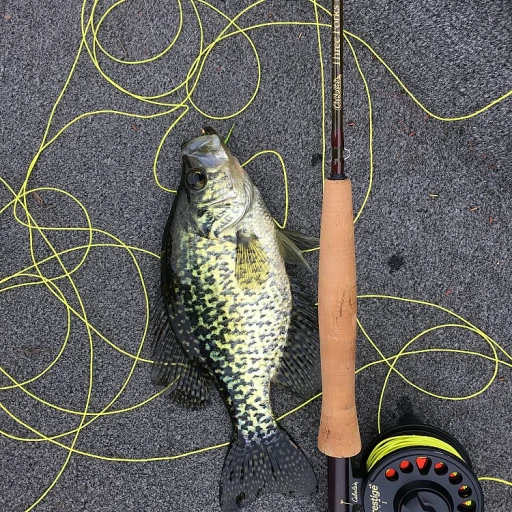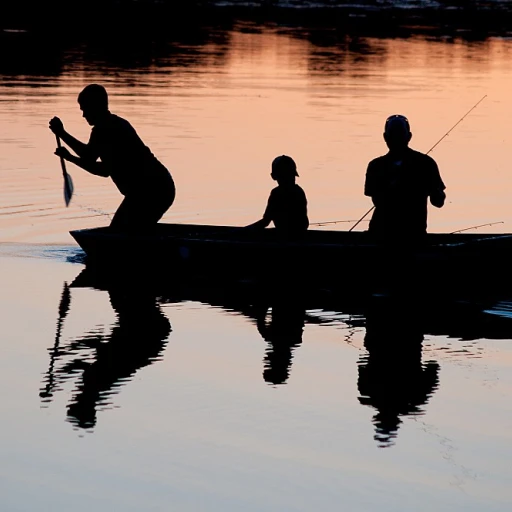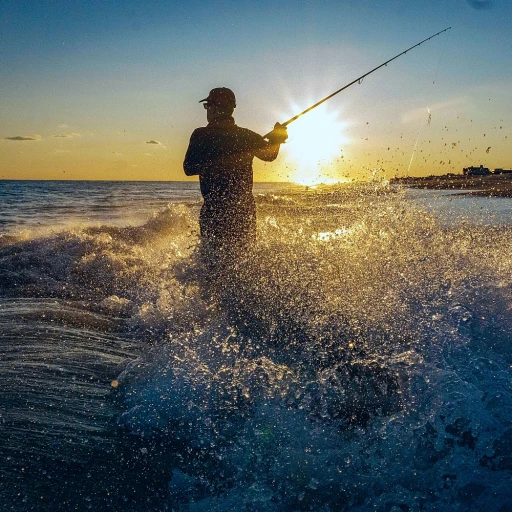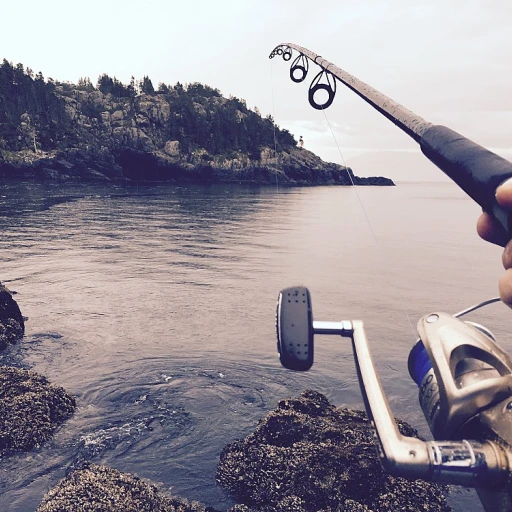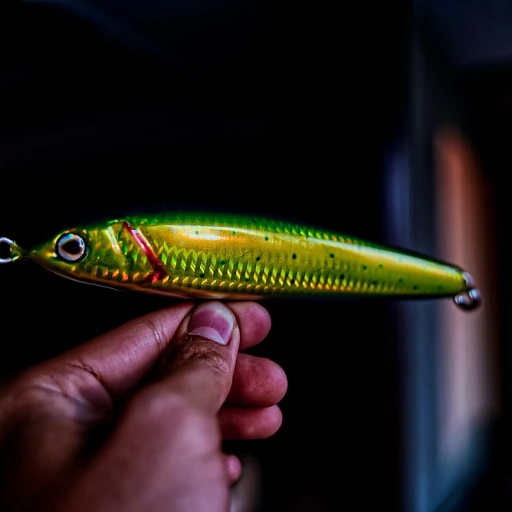
Understanding Smallmouth Bass Behavior
Deciphering the Enigmatic Nature of Smallmouth Bass
To truly succeed in your fly fishing endeavors for smallmouth bass, understanding their behavior is crucial. Known for their feisty nature, these fish thrive in freshwater habitats like rivers and streams, typically where the water is cleaner and cooler. This preference for pristine environments makes them both a challenge and a delight to catch. As surface action aficionados, smallmouth bass often hunt near the topwater, especially when the sun is shining brightly. During dusk and dawn, they may swim closer to the bottom, seeking food sheltered from the daylight. Knowing when to target them will give your fly selections, such as poppers or cls patterns, better success rates. Fly fishing enthusiasts should note that smallmouth bass are not only attracted to specific fly patterns but also respond actively to the presentation style. Whether you're using a deer hair fly or freshwater fly, energetically casting near rock bass nests or submerged structures will entice a bite. To master the capture of these spirited fish, you may explore resources such as mastering the art of jigging for lake trout, which offers insights into strategic fishing techniques applicable to various species, including smallmouth bass. Understanding the behavior and preferences of these bass will not only enhance the effectiveness of your flies but also create a more fulfilling fishing experience. Remember, success in fly fishing isn't only about having the best bass flies; it's about interpreting the sights and sounds of the water to anticipate your target's next move.Essential Fly Patterns for Smallmouth Bass
The Irresistible Charm of Bass Flies
When pursuing smallmouth bass, you need flies that attract attention and stimulate their predatory instinct. Not just any fly will do; it has to mimic the correct prey, and that's where the following selection shines.
- Poppers: These topwater flies create a unique splash that triggers a feeding response. Bass are drawn to the commotion on the surface, making poppers a go-to option for those bass-filled waters.
- Divers: Designed to skim the water's surface before diving and returning, divers simulate a distressed fish action. The key is to intersperse the dives with pauses, capturing the bass's attention.
- Clouser Minnows: Known as a freshwater fly staple, this pattern mimics small baitfish. Its versatile design makes it ideal for both top and bottom presentations, adapting to various water conditions and depths.
- Crayfish Patterns: Smallmouth bass frequently hunt along the river bottom for crayfish. These flies help fly fishing enthusiasts target bass lurking in deeper, shaded sections.
Tying your smallmouth flies with diverse materials enhances their realism and action in the water. Deer hair, for instance, is a popular choice for creating buoyant bass flies with additional surface action. When crafting your flies or selecting them from a fly shop, ensure you consider the variety of water environments and behaviors of the smallmouth bass.
Materials and Construction of Smallmouth Flies
Crafting the Perfect Fly for Smallmouth Bass
Successfully catching smallmouth bass involves intricate fly patterns that can truly work wonders. The materials and construction of these flies are essential to their effectiveness. For fly tying enthusiasts, utilizing the right tying tools and materials is crucial. Let’s delve into the elements that make the top flies stand out.
Firstly, the deer hair is a popular choice for tying popper flies, which are excellent for triggering a surface-feeding response. The buoyant nature of deer hair keeps these flies at the top of the water, simulating surface action that smallmouth bass find irresistible. When tying these top water flies, focus on durability as well as visual appeal to ensure they can withstand the challenges of freshwater fly fishing.
Another vital component in the construction of smallmouth bass flies is the variety of hooks and lines. Sturdy fly rods and reels are necessary to handle the robust fight smallmouths are known for. Strong fly lines are also essential to maintain the right tension and control.
In addition, incorporating premium materials in your clouser flies can enhance their effectiveness. Lead or bead eyes can help these flies sink to the appropriate depth, enabling you to explore both the top and bottom water columns. These flies are versatile and can mimic a range of prey including minnows and crayfish.
Lastly, careful attention to detail in the tying process enhances each fly’s attraction to bass. Tailoring the tie to mimic the bass’s natural prey will result in a much more enticing bait. A successful fly pattern takes into account the specific water environment in which you will be bass fishing.
Investing in quality materials and refining your fly tying techniques can significantly improve your fly fishing experience. For those who are passionate about constructing their own flies, consider exploring innovative accessories that can add even more to your fishing success.
Seasonal Fly Selection
Adjusting Your Fly Choices with Seasonal Shifts
As the seasons change, so do the behaviors and preferences of smallmouth bass, impacting your fly selection strategy. Here’s how you can adapt your bass flies collection to match their seasonal habits and improve your fly fishing success.- Spring: With warming waters, smallmouth bass become more active. This is the time to use flies that mimic emerging aquatic insects and baitfish. Patterns like the "Clouser Minnow" and "Woolly Bugger" excel in these conditions. Their movement in the water gives them the edge in catching the fish's attention.
- Summer: As temperatures rise, bass will often retreat to cooler, deeper waters during the day and become more active during early mornings and late evenings. Topwater flies such as "deer hair poppers" are highly effective for surface action. These topwater flies can provoke aggressive strikes with their commotion on the water surface.
- Fall: Smallmouth bass begin feeding heavily to prepare for the winter, increasing the chances for a productive fly fishing experience. Flies mimicking crayfish or minnows, such as the "Zonker" or "Muddler Minnow," are top choices. Their ability to draw attention from the bottom up makes them the best choices.
- Winter: During the colder months, bass activity slows, and it's imperative to adjust your approach. Smaller nymph patterns, like those commonly used for trout, can be beneficial as the fish conserve energy, and more subtle presentations are key.
Tips for Fly Presentation
Presentation Techniques for Success
Effectively presenting your fly to a smallmouth bass requires a blend of skill, knowledge, and patience. Understanding their behavior in different water environments is key. These bass typically ambush prey from behind structures or vegetation.Perfecting Your Casting
Casting accuracy is critical when targeting smallmouth bass. Aim to place your fly as close as possible to potential cover without disturbing the water too much. A direct cast will need a smooth release, while side casts might work better under low-hanging trees.
Exploring Different Fly Actions
Experiment with various retrieval speeds and pause durations to mimic wounded prey, drawing attention from bass. Topwater flies like poppers create attractive surface disturbances, while small streamers can imitate baitfish swimming near the bottom.
Adjusting for Water Conditions
Water clarity and temperature affect how aggressive smallmouths are. Cloudier water might necessitate brighter flies, while clear conditions call for subtler patterns. During warmer months, quicker retrieves may provoke a strike, whereas cold water often requires a slow, methodical approach.
Utilizing Fly Rods and Reels
Your fly fishing gear plays a crucial role in delivery and presentation. Fly rods with a medium-fast action offer a balance of power and precision, especially when paired with an appropriate fly reel and line.
Practicing Patience and Observation
Success relies on patience and the ability to adapt as conditions change. Monitoring smallmouth behavior and fly interaction can guide your next move, ensuring each cast is better tailored to attract bass effectively.
By mastering these techniques, you can enhance your chances of landing one of these challenging fish during your next bass fishing expedition.
Maintaining and Storing Your Flies
Prolonging the Life of Your Smallmouth Flies
When it comes to fly fishing, particularly when targeting smallmouth bass, maintaining and storing your flies properly is crucial to ensuring their longevity and performance. Here are some tips:
- Clean and Dry: After a day of bass fishing, inspect each fly. Rinse off any residue and make sure they're thoroughly dried before storage to prevent rust and degradation.
- Organized Storage: Use a dedicated fly box with compartments to keep your flies organized. This helps you find the right fly pattern quickly and prevents damage to materials like deer hair and feathers when switching between flies smallmouth favor.
- Avoid Overcrowding: Cramping your flies in small compartments can crush or distort them. Make sure there's enough space in your fly box long enough to accommodate the number of flies you carry.
- Temperature Considerations: Store your flies in a cool, dry place. Extreme temperatures can affect the structural integrity of the materials used in tying, particularly synthetic lines and poppers.
- Use Protective Cases: While transporting your gear, ensure your fly reels, rods, and tying tools are securely packed to prevent unintentional pressure on your bass flies.
- Regular Inspection: Periodically check your smaller or frequently used smallmouth flies for signs of wear. A fly with a damaged hook or missing components may not perform well during the action.
By incorporating these methods, your bass fly collection will remain in top condition, ready for use whether you're casting across rivers or working the surface on a calm lake. Remember, the life of your fishing flies is directly related to the care you put into them, ensuring they remain the best tools for bass fishing adventures.

